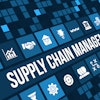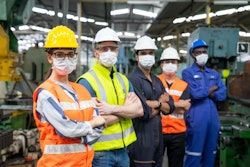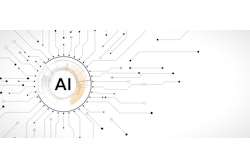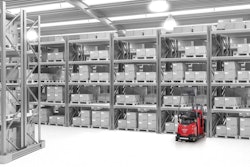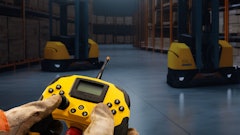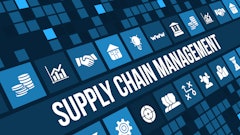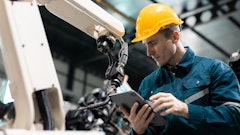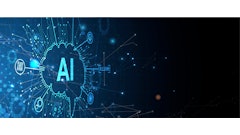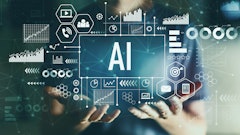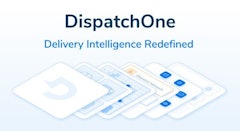
Over the past several years, global supply chains have become increasingly complex, contending with labor shortages, geopolitical conflicts, and consistently changing tariff/duties inflationary cost spikes. Tariffs, especially recently, have emerged as the most influential business challenge that companies are dealing with today, and mitigation is not always simple.
Simply applying technology does not automatically solve problems, and tariffs are no different. Companies must form a strategy that first focuses on compliance today, forecasting (financial and demand), and finally, mitigation. It is critical to address compliance first and foremost due to the consequences of non-compliance. Once you form your strategy and are compliant, turn your focus to forecasting and mitigation, where technology and artificial intelligence (AI) can support your efforts.
The supply chain challenge and added tariff complications
Disruptions at any point in the supply chain can ripple downstream, raising expenses and delaying production. Tariffs create additional supply chain issues while companies are also under pressure to reduce carbon emissions and increase transparency into sourcing practices. It all adds up to a massive problem that must be addressed with a combination of strategy and technology.
Decades of practical know-how, from how to cost a complex assembly to the nuances of supplier negotiations, risk disappearing as experienced engineers and other key personnel are exiting the workforce. Traditional systems rarely capture the tacit expertise that they provide, leaving companies vulnerable to costly mistakes when key individuals retire. Preserving and codifying this knowledge with technology has become as critical as improving supply chain efficiency itself.
AI and technology are part of a more comprehensive tariff strategy
Technology solutions, including AI add value across every stage of the supply chain, provided it can draw on high-quality, consolidated data to aid in your broader tariff strategy.
Below are several examples of how AI and other technology solutions can assist in navigating the volatile tariff landscape:
- Centralized cost tool as the baseline: The power of your technology of choice depends on a robust data backbone. A centralized cost tool provides the unified database that AI systems require. This tool consolidates internally produced part costs, purchased component BOM costs, machine rates (fixed and variable burden), labor time and cost, logistics fees, inbound inventory costs, tariffs, and overheads into one platform. Without it, AI models risk working with incomplete or inconsistent data, undermining accuracy. With it, companies have their cost engineering and can more accurately assess their costs and the impact of any applicable tariffs.
- Forecasting and inventory planning: AI improves demand forecasting, reducing stockouts and excess inventory. Accurate forecasts help companies plan around potential tariff impacts, avoiding costly rush orders or overstocking in volatile trade environments.
- Sourcing and procurement: RFQ (request for quotation) analysis is often a manual, time-consuming process. Technology can be used to analyze supplier quotes and evaluate geopolitical risks, enabling proactive sourcing decisions. This helps companies shift suppliers or regions quickly in response to new or changing tariffs.
- Manufacturing and production: Inside the factory, predictive maintenance and digital twins optimize production. By simulating scenarios, companies can adjust processes to reduce costs when tariffs raise material or equipment expenses.
- Logistics and transportation: AI-driven route optimization and real-time tracking reduce transit costs and delays. Faster, more agile logistics help reduce risks when tariffs disrupt shipping lanes or increase customs times.
- Cost engineering: Perhaps most critically, AI can transform cost engineering. By analyzing historical models, purchase orders, and supplier quotes, AI highlights gaps between target and actual costs. It can perform total landed cost studies, factoring in logistics, tariffs, and duties to provide a complete financial picture. With a centralized cost tool as the backbone, companies can model the effect of tariff changes in real time, then use AI to evaluate sourcing alternatives, supplier shifts, or regional production strategies. This capability transforms tariffs from a disruptive shock into a manageable cost variable.
- Design-to-source integration: Up to 80% of a product’s cost is locked in during the design phase and AI can link design decisions to tariff and logistics implications, allowing teams to choose materials and suppliers that minimize exposure to unpredictable trade policies. AI can simulate the cost, lead time, and risk implications of material and process choices. AI can flag lower-cost or more resilient alternatives and highlight the tariff or logistics impact of different sourcing options. This design-to-source integration ensures that products are optimized not only for performance but also for manufacturability, cost competitiveness, and supply chain resilience, but cannot be achieved without a cost tool.
- Capturing sticky knowledge: AI helps embed the sticky knowledge of seasoned professionals into organizational systems. Instead of being lost when workers retire, this expertise becomes codified and accessible to new employees. In this way, AI not only improves decision-making but also preserves institutional memory.
Risks and barriers
As with any transformative technology, integrating technology into supply chains comes with challenges. Data quality and integration remain the biggest obstacles; many companies underestimate the effort required to clean and harmonize data before AI can be effective. Data integrity, cybersecurity concerns, and potential talent gaps are three reasons why you must think of the broader strategy and application to your business before embarking on a technology implementation.
Roadmap for adoption
Companies do not need to implement AI or other technology solutions everywhere at once. A structured roadmap increases the chance of success. Start slowly, build a strong digital foundation, start with a centralized cost tool, consider how well the new solution flows with your operations and established processes, and form strategic partnerships that help you reach your end goal.
This may look different for each company, but the basic principles still apply, use strong discretion when it comes to AI and other technology, they are not magic.
The bottom line
Sophisticated technology, especially AI, is rapidly becoming a baseline capability for competitive supply chains. From forecasting to cost engineering, it enables greater agility, resilience, and transparency, which are all essential to stay ahead of new tariff developments and be prepared. Yet its effectiveness within your business hinges on a strong foundation: a centralized cost tool that provides the single source of truth AI needs to generate actionable insights.
By enabling real-time tariff modeling and connecting design decisions to sourcing strategies, AI helps companies reduce risk and control costs earlier in the product lifecycle, which is critical as tariffs raise costs on business owners.
For supply chain leaders, the message is clear: AI is no longer optional. Those who invest today will define the cost and performance benchmarks of tomorrow and be best prepared to withstand any new challenges that come from tariffs or otherwise.

